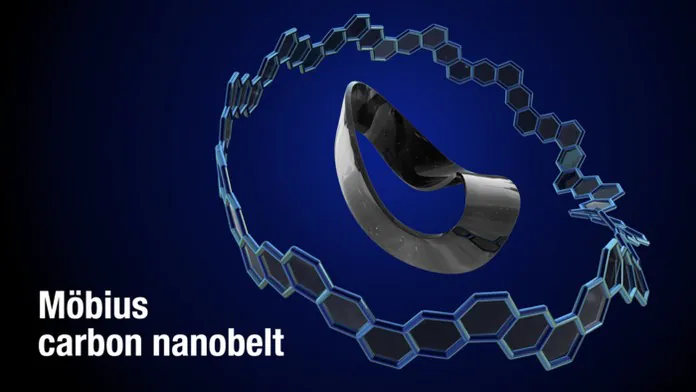© ROOT-NATION.com - Use of content is permitted with a backlink.
Japanese scientists from the University of Nagoya and the University of Hokkaido have synthesized the first tape-like molecular nanocarbon with a twisted Moebius strip topology, which paves the way for the development of nanocarbon materials with a complex topological structure, reports EurekAlert!. The discovery is described in detail in the journal Nature Synthesis.
“The Möbius carbon nanobelt was a dream molecule in the scientific community after we reported the first chemical synthesis of a carbon nanobelt — an ultra-short carbon nanotube— in 2017. Just like belts we use every day, we imagined what would happen to our ‘molecular belt’ when tightened with a twist. It’s another amazingly beautiful molecule,” says Kenichiro Itami, leader of the research group.

The Moebius carbon nanobelt was synthesized as a result of 14 stages of a chemical reaction, including a newly developed functionalization reaction, Z-selective Wittig reaction sequence, and strain-inducing nickel-mediated homocoupling reaction. Spectroscopic analysis and molecular dynamics simulation show that the rotating fragment of the Moebius strip moves rapidly around the carbon nanoband molecule in solution.
The discovery paves the way for the development of nanocarbon materials with a complex topological structure that can be used in nanotechnology, electronics, optics and biomedical applications.
Moebius strip is a topological object, a non-oriented surface with one edge. Its model can be represented as a strip of paper with opposite edges connected, but one of them was previously inverted.
You can also help Ukraine fight with Russian occupants via Savelife or via an official page of the National Bank of Ukraine.
Read also:
- Hubble and the expansion of the universe: 30 years of the space telescope
- Scientists found 830 million year old microbes, some are still alive


